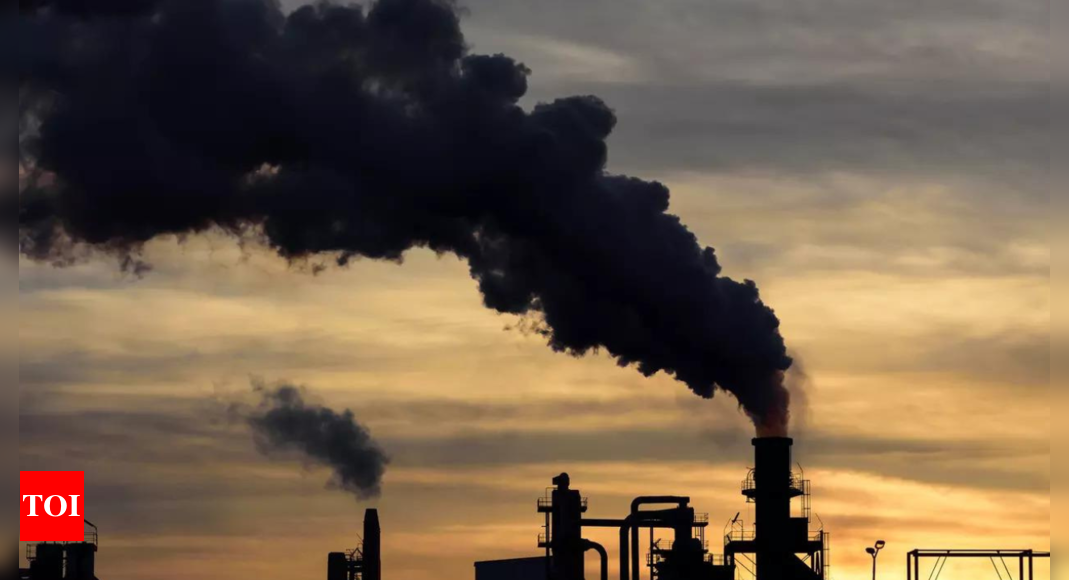NEW DELHI: Government will soon come out with a policy framework to implement carbon capture, utilisation and storage (CCUS) initiatives in the country and make the power ministry the nodal agency to take it forward.
CCUS refers to a range of applications through which carbon dioxide (CO2) is captured generally from large point sources like power generation or industrial facilities that use either fossil fuels or biomass as fuel so that the carbon dioxide does not enter the atmosphere.
The captured CO2 is primarily used in the fertiliser industry. It is also used for producing synthetic fuels, chemicals and building aggregates. Globally, power and industry sectors account for about 50% of all greenhouse gas (GHG) emissions. Effective use of CCUS technologies may not only help India achieve its emission reduction target but also lead it to its net-zero goal of 2070.
Considering CCUS as one of the important measures to achieve decarbonisation from hard-to-abate sectors such as cement, iron and steel, chemicals and power, the Prime Minister’s Science, Technology & Innovation Advisory Council (PM-STIAC) on Tuesday discussed its various aspects and decided to have a national portal for CCUS projects to bring all stakeholders on a common platform.
The meeting, chaired by principal scientific adviser to the Government Ajay Kumar Sood, also discussed India’s carbon market and carbon credit scheme to reduce emissions, pursue a low-carbon path, and provide market support for mitigation methods and technologies.
Sood emphasised the need to foster nationwide adoption of CCUS technologies and take this initiative forward through a mission-mode approach.
Participants from various ministries, including environment, earth sciences and power, also discussed the need to identify adoptable technologies and life-cycle assessment of CCUS projects. It was noted that while standards for carbon capture and storage are in place, standards for carbon utilisation and transportation are still being developed.
CCUS refers to a range of applications through which carbon dioxide (CO2) is captured generally from large point sources like power generation or industrial facilities that use either fossil fuels or biomass as fuel so that the carbon dioxide does not enter the atmosphere.
The captured CO2 is primarily used in the fertiliser industry. It is also used for producing synthetic fuels, chemicals and building aggregates. Globally, power and industry sectors account for about 50% of all greenhouse gas (GHG) emissions. Effective use of CCUS technologies may not only help India achieve its emission reduction target but also lead it to its net-zero goal of 2070.
Considering CCUS as one of the important measures to achieve decarbonisation from hard-to-abate sectors such as cement, iron and steel, chemicals and power, the Prime Minister’s Science, Technology & Innovation Advisory Council (PM-STIAC) on Tuesday discussed its various aspects and decided to have a national portal for CCUS projects to bring all stakeholders on a common platform.
The meeting, chaired by principal scientific adviser to the Government Ajay Kumar Sood, also discussed India’s carbon market and carbon credit scheme to reduce emissions, pursue a low-carbon path, and provide market support for mitigation methods and technologies.
Sood emphasised the need to foster nationwide adoption of CCUS technologies and take this initiative forward through a mission-mode approach.
Participants from various ministries, including environment, earth sciences and power, also discussed the need to identify adoptable technologies and life-cycle assessment of CCUS projects. It was noted that while standards for carbon capture and storage are in place, standards for carbon utilisation and transportation are still being developed.

